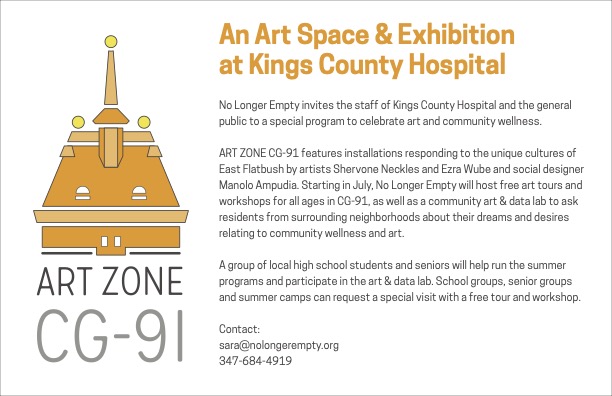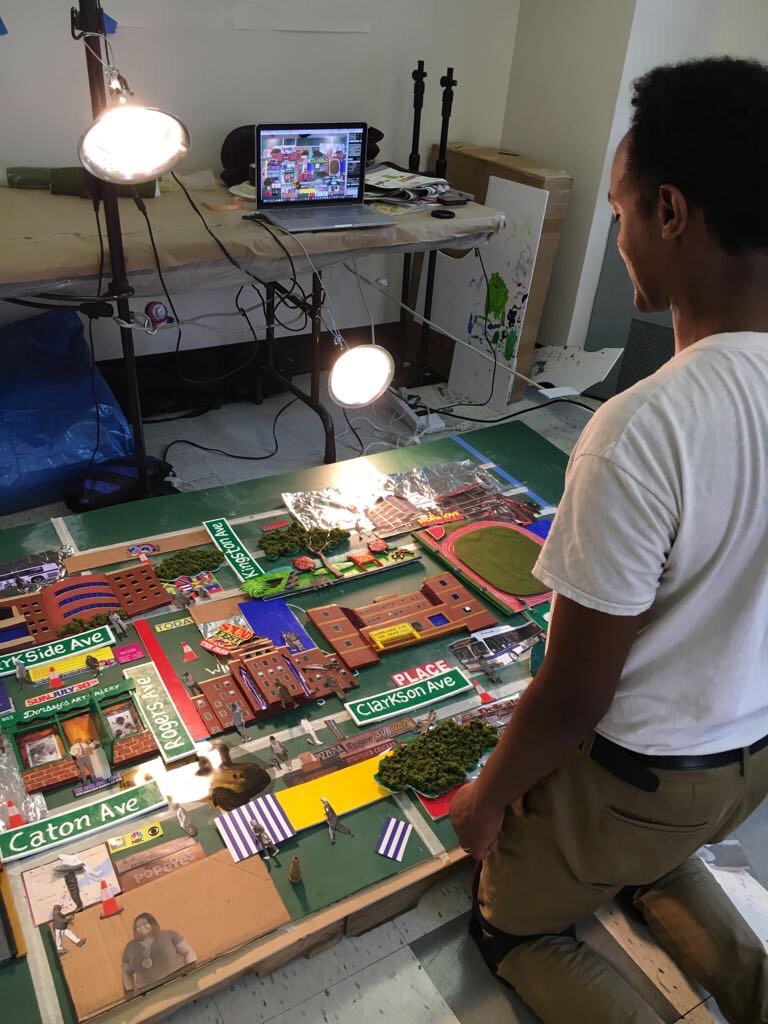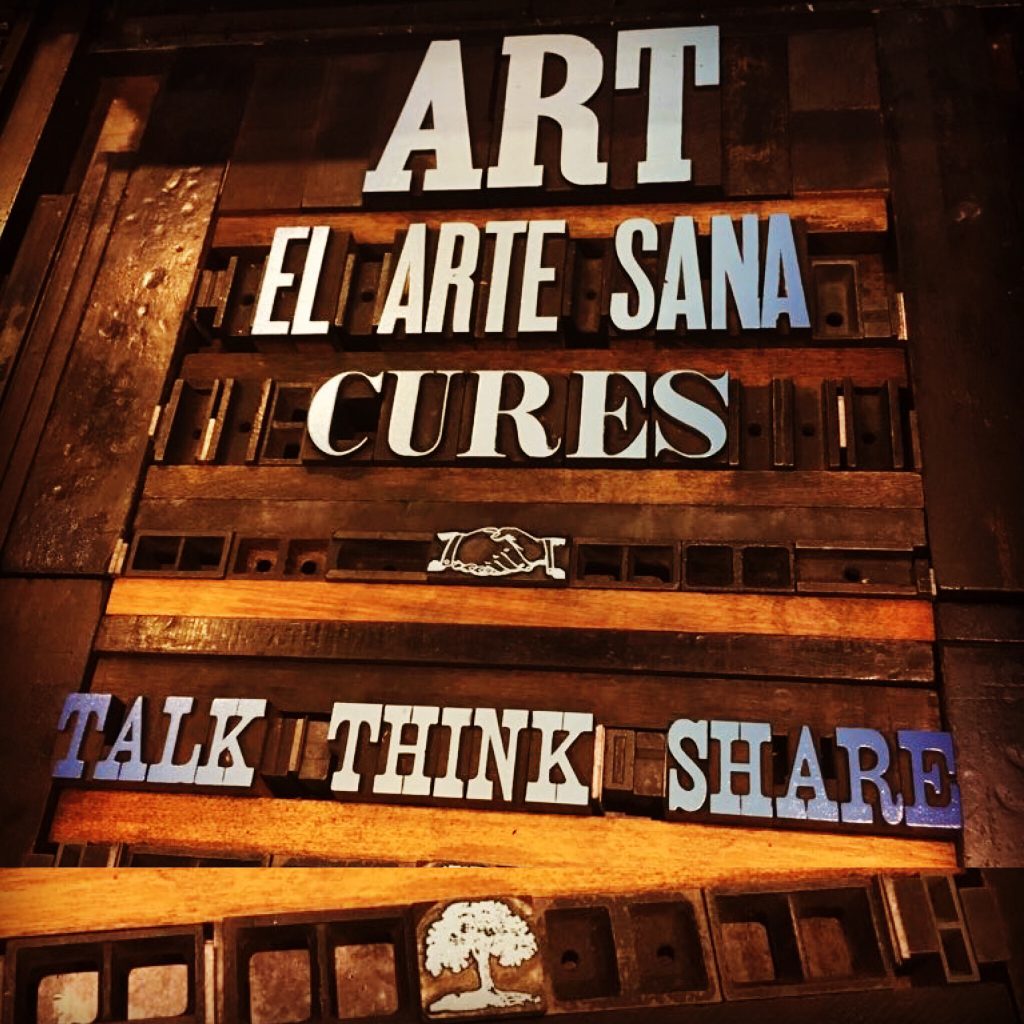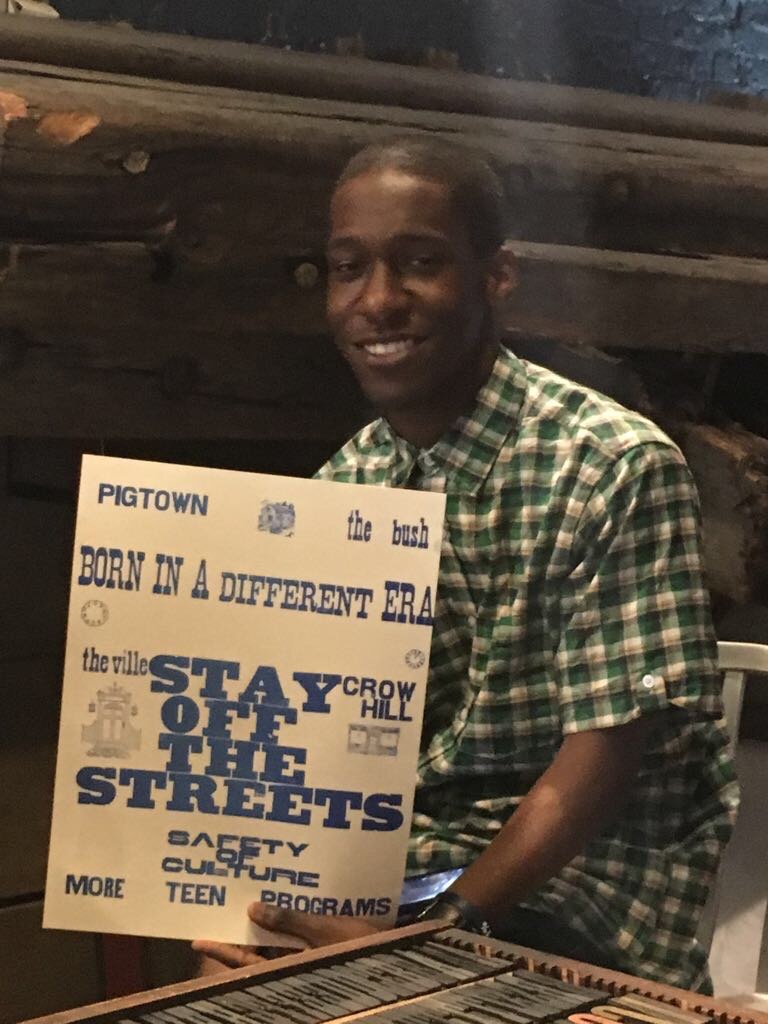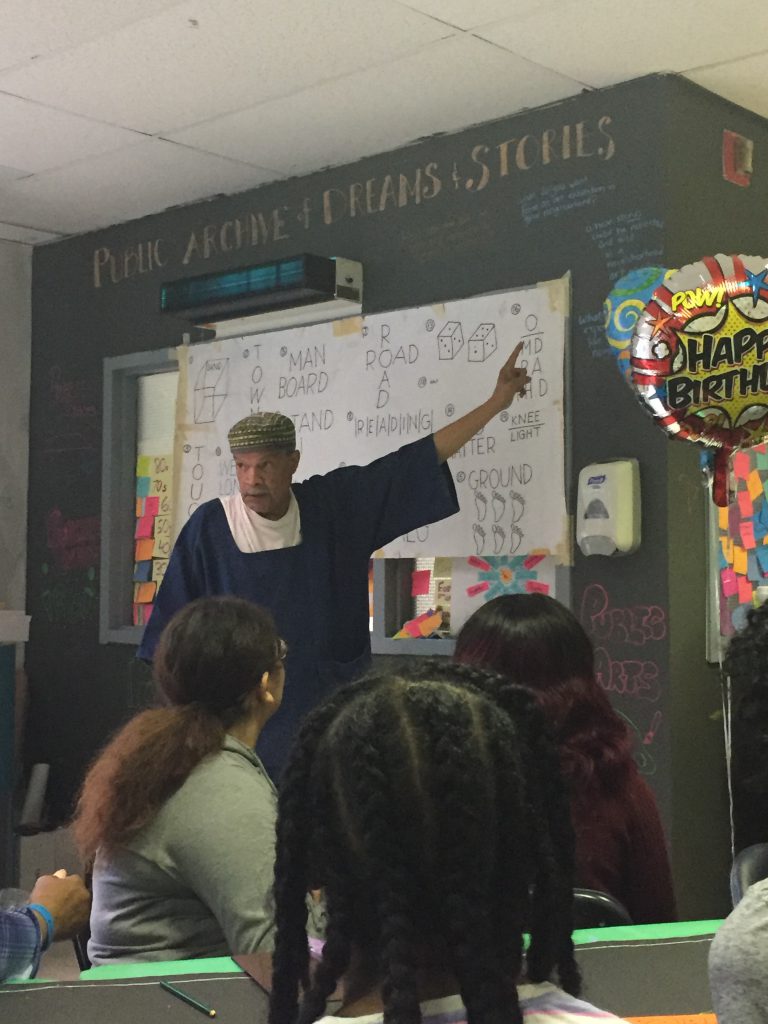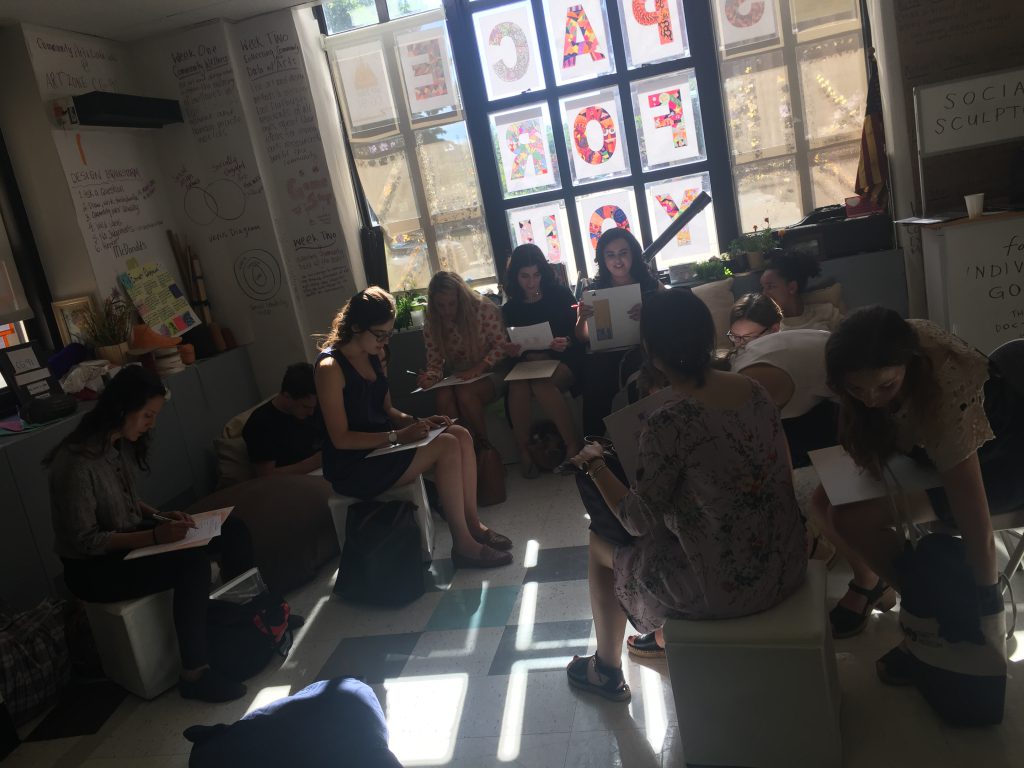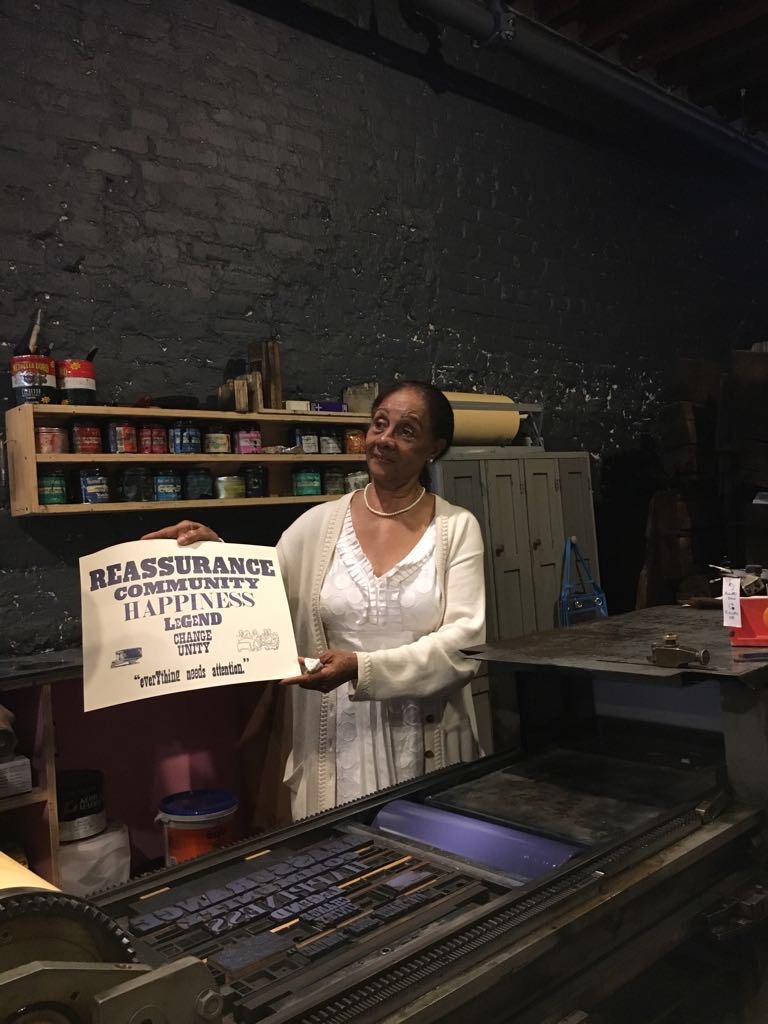Community spaces for dialogue around cultural resources
Resources shared: tech skills, job training certificates for seniors and teens, critical education, oral histories, alternative therapy, curating as a profession, connections across boundaries of age, race, language, and culture
JAMECO STORY SALON
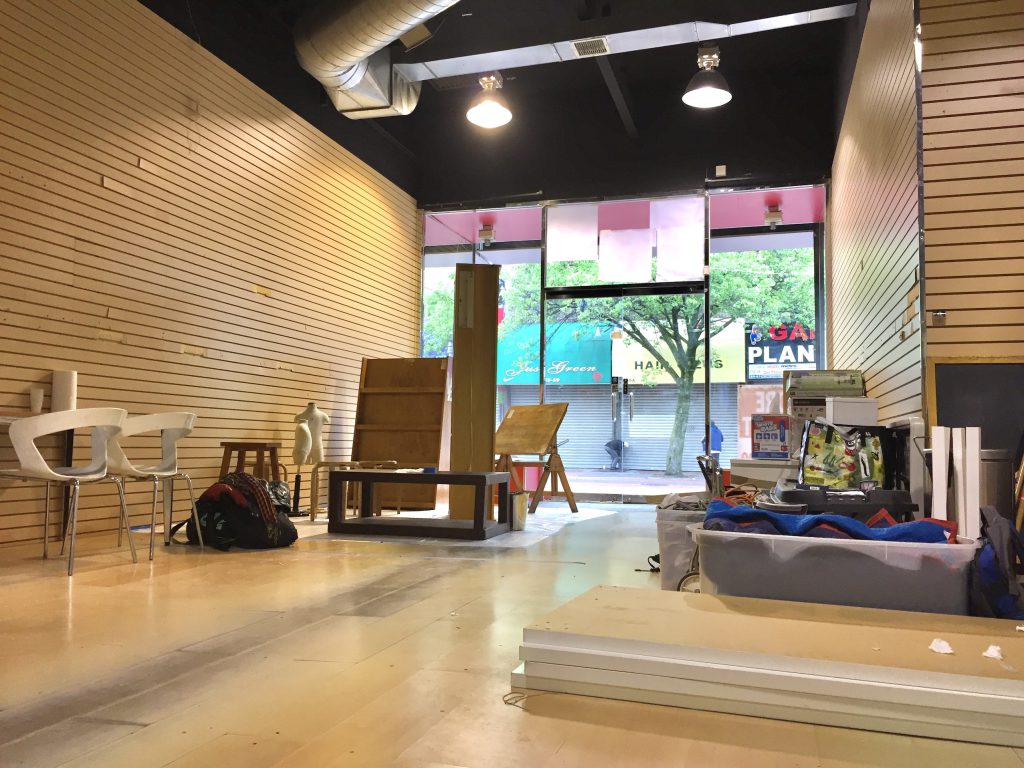

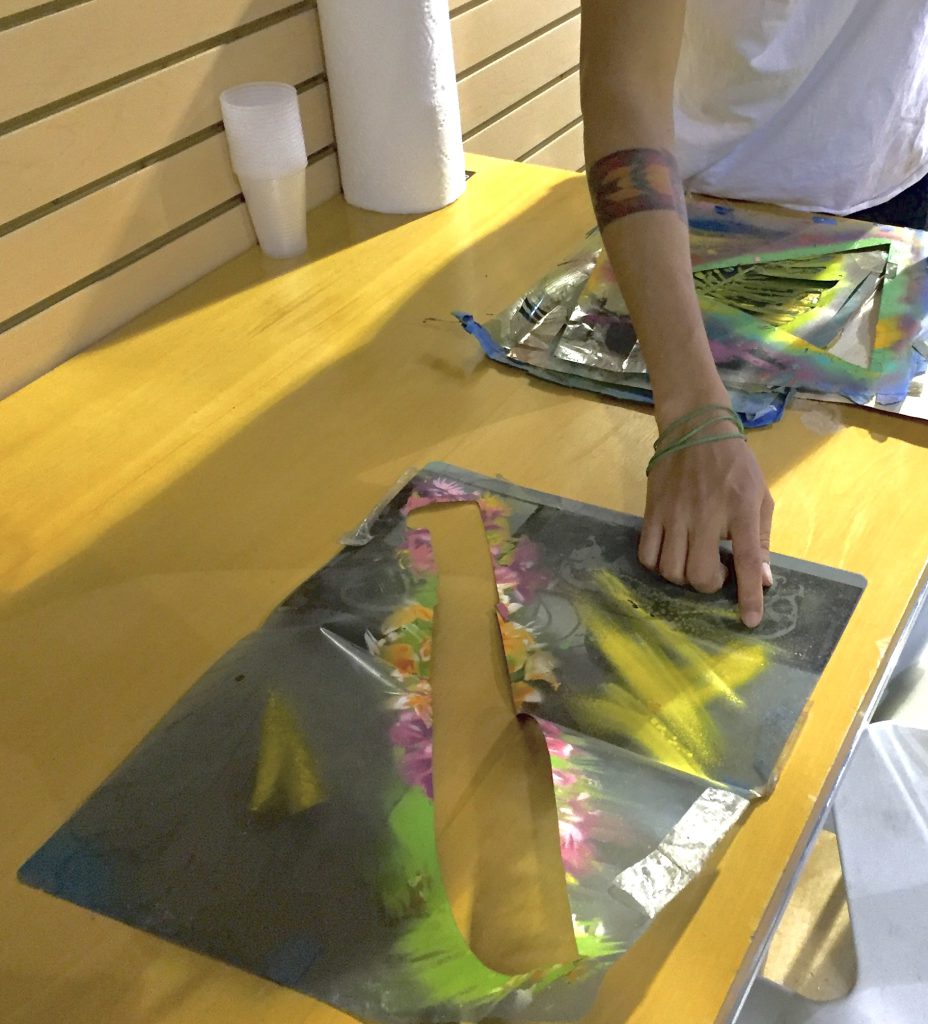


A social practice intervention
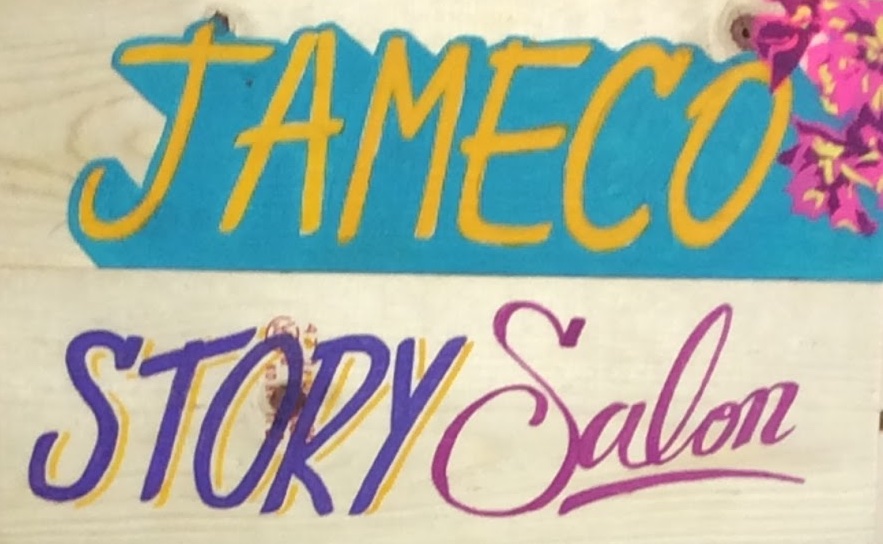
Jameco Story Salon was created in the heart of Jamaica, Queens, as a bespoke art center along a commercial corridor on 175th street. Part of a larger exhibition curated by Rachel Gugelberger called Jameco Exchange, Jameco Story Salon was a way to activate the exhibition with stories and art-making. It was an open invitation to passersby, with free art supplies and workshops. The salon was placed at the mirrored entrance to an empty retail store that was once the bargain shopping mart Weekend Fashion for the Ladies, sandwiched in between All Seasons Reggae Hot Spot and Cap King. Visual artist Caló Rosa (El Salvador, 1987), was commissioned to design the story salon as an artist’s workshop. He fashioned prints of plants and aesthetics native to El Salvador onto the furniture and drafting tables, representing the Salvadoran community of refugees and the color palette they brought to this neighborhood of Queens. In the 1980s Salvadoran public culture bloomed in Jamaica, with local businesses, community service organizations and pupuserías decorated in Salvadoran craft, created by migrants fleeing a civil war that killed more than 75,000 between 1979 and 1992. Jameco Exchange also featured Jameco Vibes, a space curated by twenty-nine teens from the neighborhood who designed their own site-specific exhibit in the back store room, and gave gallery tours of the space. The project was created for the arts organization No Longer Empty with funding from the City of New York. Project fellow: PJ Gubatina Policarpio.
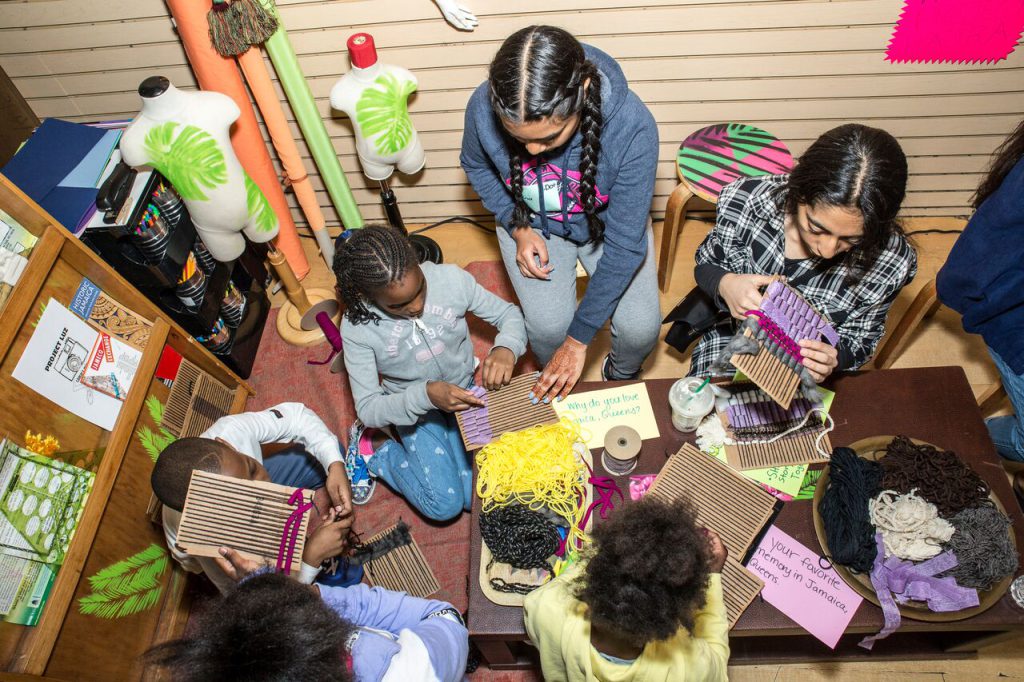
MEDIA GAME LAB
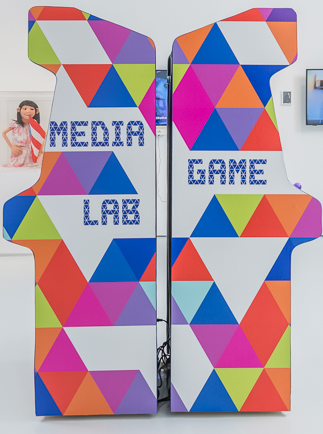
Participatory design for a community space of art and technology
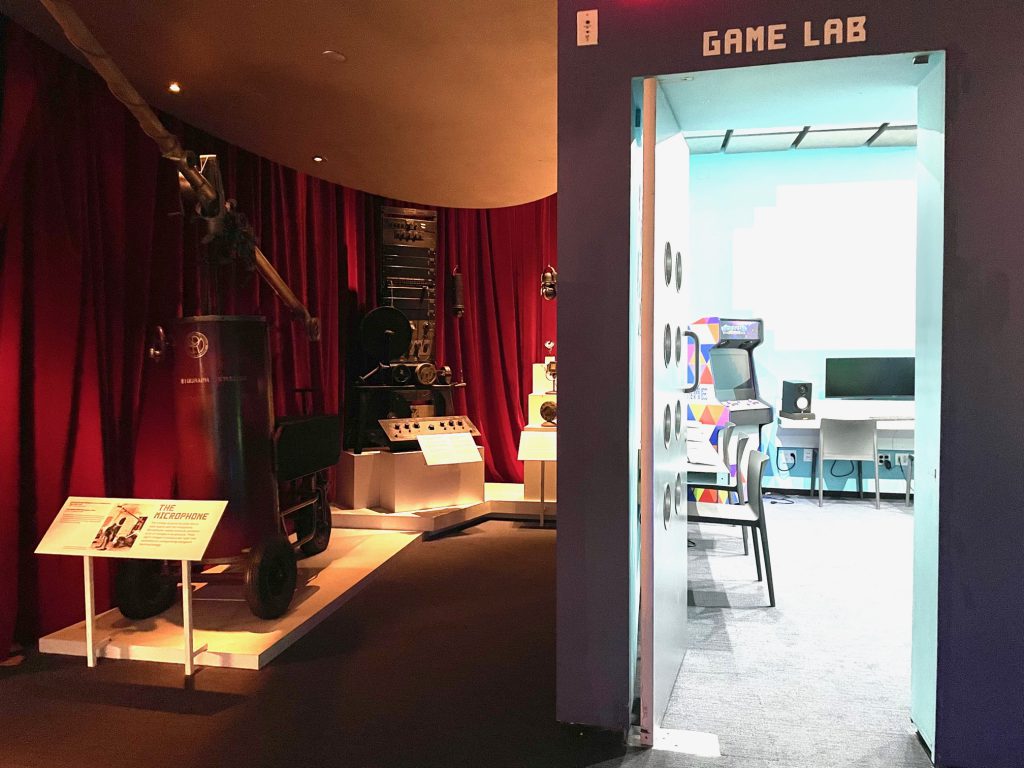
The media game lab provides public access to game design, media-making, film production and other creative tech skills, offering a doorway into the creative economy. Artists use the lab to translate ideas to artworks in this space stocked with new equipment and informed by media history in the surrounding galleries of Museum of the Moving Image. Participants earn media-making badges in the lab by creating media with guidance from filmmakers and digital artists. A display area features new media exhibits by collaborating artists and their students. The lab was created through a participatory design process over the course of two years, in which community members ages 10 through 79 worked with designers, educators, activists, and media practitioners to envision a space reflecting community aspirations. Participants identified a local need for free access to media skills and the creative economy in a public space where people of all ages, backgrounds and abilities felt free to create, play and brainstorm together. The lab is the first of its kind in a museum in New York City, and was developed by Sara Angel Guerrero over a period of 5 years while she served as Deputy Director of Education & Community Engagement, with support from staff at Museum of the Moving Image. The lab has received funding from The Keith Haring Foundation, The Bailey Foundation, The Pinkerton Foundation, GKV Foundation, NYC Department of Cultural Affairs, and the Institute of Museum & Library Services. The media game lab inspired the State of New York to grant Museum of Moving Image 5 million in 2022, towards expanding the lab as a resource for economic and educational recovery from the COVID19 pandemic.
ART ZONE CG 91
Community data lab & art center in a public hospital
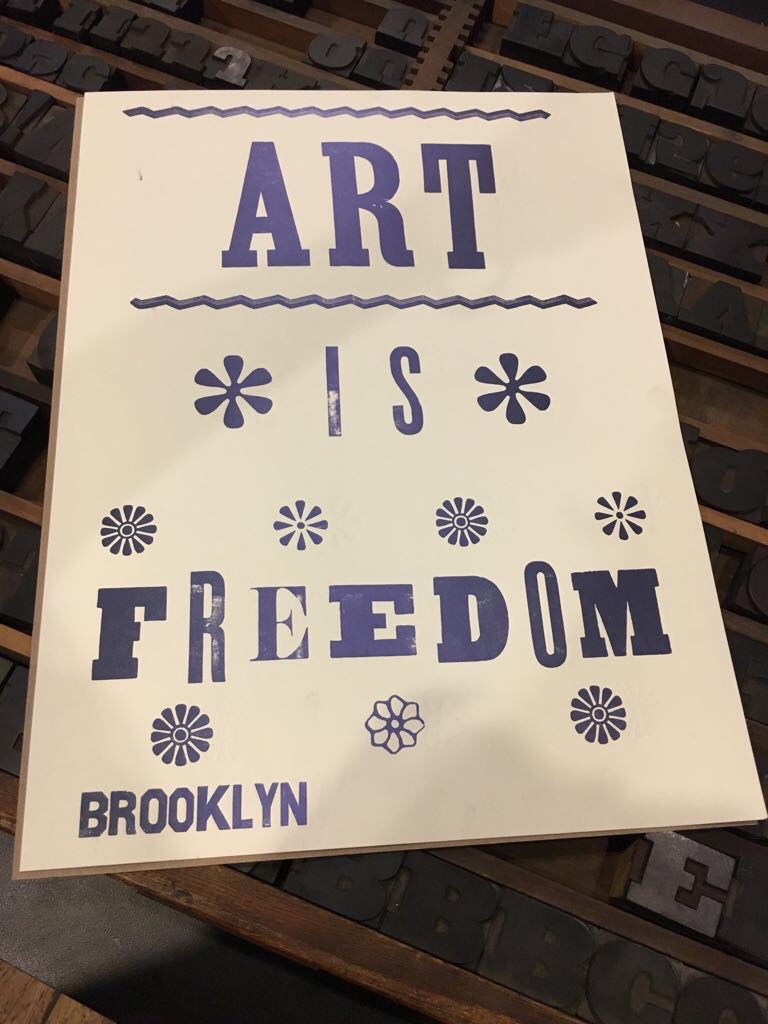
In an empty space next to the emergency room at Kings County Hospital in Flatbush, Brooklyn, I led a community initiative to design an art space for healing, inspired by community data. I recruited a group of 30 local teens and senior citizens to learn community-responsive curating , and work with artists and designers towards the goal of creating an art zone responsive to the needs of people who live in and around the hospital. Over the course of a summer, we interviewed patients, staff, family members, and local residents about what they wanted most from an art centre in their community. We used the responses to design a gallery around healing and art, and posted the dreams and desires we heard from the community. The result was AZ CG 91 – a place filled with interactive artworks by visual artists from the same neighborhood, as well as art therapy sessions, art tours for non-sighted community members, and festivals to celebrate the space. I designed this project as a way for the non-profit No Longer Empty, and the hospital to become more deeply involved in collaborating with local communities as partners in art and healing. No Longer Empty received support for this project through successful grant proposals I wrote on behalf of the organization, from The Malka Fund, New York State Council on the Arts, and The New York City Department of Cultural Affairs as well as donations from Materials for the Arts in New York City. Art Zone CG91 spanned over three years (2016-2019) and became a space for artists, visitors, families, teens, and seniors to share stories across generations.
